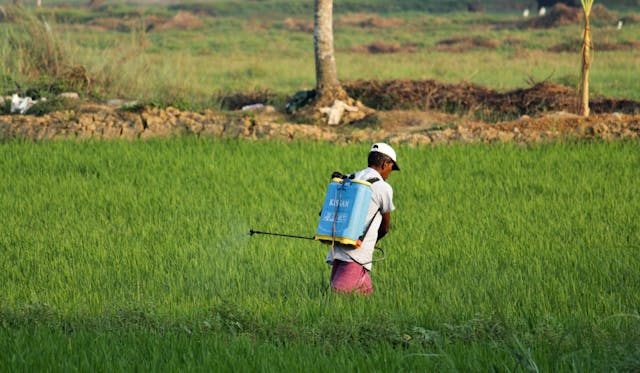Last Updated on May 23, 2024 by Ali Hamza
In the constant battle between humans and pests, fumigation has emerged as a powerful weapon. Fumigation is a process used to eliminate unwanted organisms, primarily insects, rodents, and microbes, from enclosed spaces by exposing them to fumigants – chemical substances that exist in gaseous form at room temperature. This technique has gained immense significance in pest control due to its efficacy in eradicating pests that traditional methods might struggle to tackle. In this article, we delve into the science behind fumigation and explore its importance in safeguarding public health and preserving commodities.
The Science Behind Fumigation:
Fumigation employs the principles of chemistry and physics to combat pests effectively. The process typically involves enclosing an area or an item in a sealed space and introducing a fumigant gas into that environment. The fumigant gas permeates the space, penetrating every nook and cranny, including places that are inaccessible through conventional means. Once in contact with the pests, the gas disrupts their biological processes, causing mortality or preventing further reproduction.
Fumigants are chosen based on their chemical properties and effectiveness against specific pests. Common fumigants include methyl bromide, phosphine, sultry fluoride, and hydrogen cyanide. These substances possess varying degrees of toxicity and penetrative capabilities, making them suitable for different scenarios. Fumigation requires careful planning and execution, as improper use can lead to health risks for humans and pets.
Importance of Fumigation:
- Agricultural Preservation: Fumigation plays a pivotal role in safeguarding agricultural products. Stored grains, fruits, and other commodities are susceptible to infestations by insects and microbes. Fumigation prevents post-harvest losses by eradicating pests and ensuring that these products remain viable for consumption and trade.
- Public Health Protection: Certain pests, such as mosquitoes and ticks, are carriers of diseases that can pose significant threats to public health. Fumigation helps control the spread of diseases like malaria, dengue fever, and Lyme disease by targeting these vectors in their breeding grounds.
- Structural Pest Management: Termites, bedbugs, and cockroaches can wreak havoc on buildings and homes. Fumigation offers a comprehensive solution to eliminate these pests and prevent structural damage and health hazards associated with their presence.
- International Trade: Fumigation is a critical component of international trade, ensuring that goods transported across borders are free from pests and diseases. Many countries require imported commodities to undergo fumigation to prevent the introduction of non-native species and pathogens.
- Quarantine Measures: Invasive pests can have devastating effects on local ecosystems and economies. Fumigation is often used as part of quarantine measures to prevent the introduction and spread of invasive species in new environments.
Challenges and Considerations:
While fumigation is a potent tool, it is not without its challenges and considerations. Fumigants are often toxic, requiring careful handling and application to minimize risks to humans, animals, and the environment. Proper ventilation and aeration are crucial post-fumigation steps to ensure that residual fumigants dissipate safely.
Furthermore, pests can develop resistance to fumigants over time, necessitating the rotation of chemicals and the integration of other pest management strategies. Striking a balance between effective pest control and minimising environmental impact is a constant challenge.
Conclusion:
In the realm of pest control, fumigation stands as a formidable technique, offering a comprehensive and efficient solution to eradicate pests that threaten agriculture, public health, and structures. Its use requires a thorough understanding of the science behind it and a commitment to responsible application. As we continue to face evolving pest challenges, fumigation will likely remain a key player in our efforts to maintain a pest-free environment and protect the well-being of societies worldwide.


























